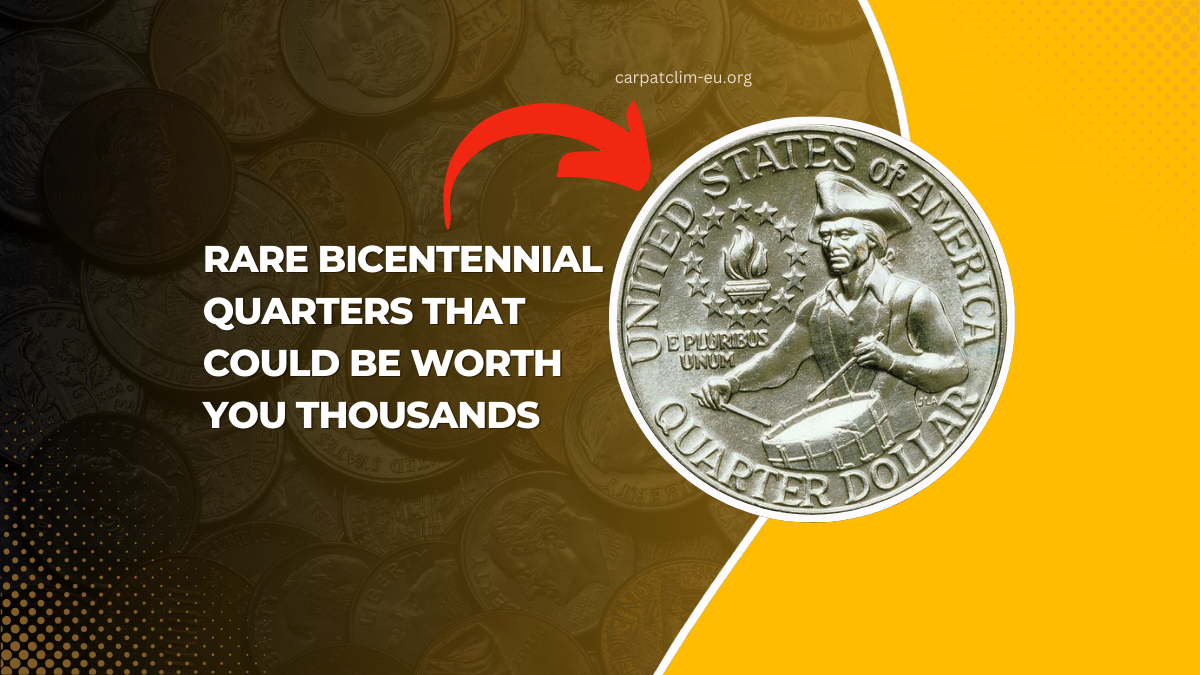Rare Bicentennial
Rare Bicentennial Quarters That Could Be Worth You Thousands

In 1976, to commemorate the 200th anniversary of American independence, the U.S. Mint released the Bicentennial Quarter.
While many of these coins remain in circulation at face value, certain variations have become highly sought after by collectors, fetching impressive sums.
Identifying Bicentennial Quarters
Bicentennial Quarters are distinguished by their unique reverse design featuring a Colonial drummer and a torch encircled by 13 stars, symbolizing the original colonies.
The obverse side bears the dual date “1776–1976” beneath George Washington’s profile. These coins were minted in Philadelphia (no mint mark), Denver (“D” mint mark), and San Francisco (“S” mint mark).
Factors Influencing Value
The value of a Bicentennial Quarter hinges on several factors:
- Mint Mark: Coins from the San Francisco Mint, especially those in silver, are generally more valuable.
- Condition: Uncirculated coins or those in pristine condition can command higher prices.
- Errors: Quarters with minting errors, such as the doubled die obverse, are particularly valuable.
| Mint Mark | Composition | Condition | Approximate Value | Notable Features |
|---|---|---|---|---|
| None (Philadelphia) | Clad | MS67+ | $2,350 | High-grade specimens |
| D (Denver) | Clad | MS68 | $3,750 | High-grade specimens |
| S (San Francisco) | Silver Proof | PR70 DCAM | $125 | Deep cameo contrast |
| D (Denver) | Clad with DDO error | XF45 | $235 | Doubled die obverse error |
While many Bicentennial Quarters are common, specific variations, especially those in exceptional condition or with unique features, can be quite valuable.
Collectors should carefully assess their coins, considering factors like mint mark, composition, condition, and potential errors, to determine their true worth.
FAQs
How can I identify a valuable Bicentennial Quarter?
Valuable Bicentennial Quarters often have an “S” mint mark indicating they were minted in San Francisco, are composed of silver, are in uncirculated or proof condition, or possess minting errors like a doubled die obverse.
Are all Bicentennial Quarters made of silver?
No, only certain Bicentennial Quarters minted in San Francisco are composed of 40% silver. Most circulating versions are clad coins made of copper and nickel.
What is a doubled die obverse error?
A doubled die obverse (DDO) error occurs during the minting process when the coin’s design is imprinted twice, slightly offset, resulting in a noticeable doubling effect on the coin’s features.
-
Social Security2 weeks ago
Who Will Qualify The $2000 Social Security Payment, February 12?
-
Social Security1 day ago
Social Security- February 19 Payment for Beneficiaries Born from the 11th to the 20th
-
US Coins1 week ago
Rare 1943 Copper Lincoln Wheat Penny Worth $2.5 Million, Still In Circulation
-
Personal Finance2 weeks ago
1964 JFK Half-Dollar Coins Fetch Over $150,000 At Auction
-
US Coins6 hours ago
The 1917-S Buffalo Nickel: A Rare Gem Fetching Over $60K
-
Social Security2 weeks ago
2 Reasons Your Social Security Payments Could Be Reduced as an SSDI Beneficiary
-
Latest News2 weeks ago
Social Security Payments Up To $5,108 Begin This Week – Check Your Eligibility Now!
-
Personal Finance1 week ago
Get Up To $8,000 In IRS Tax Credits – See If You Qualify & Learn How To Apply!